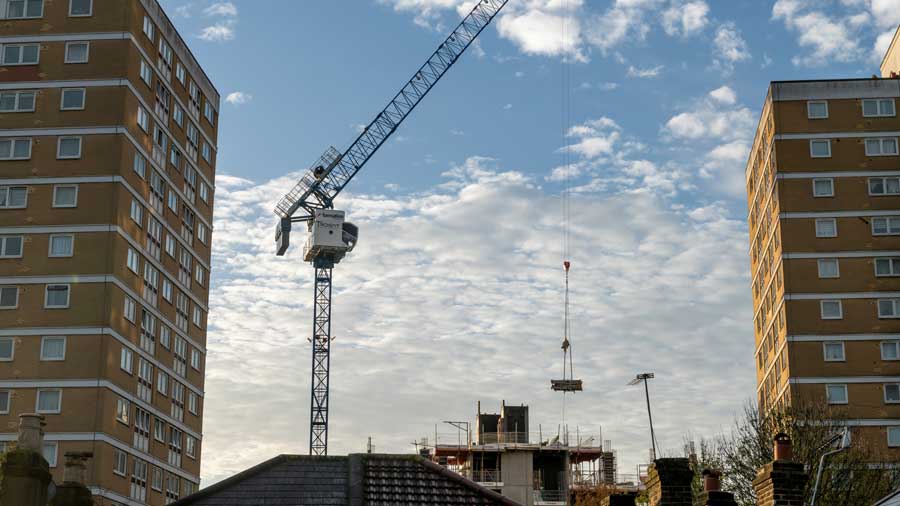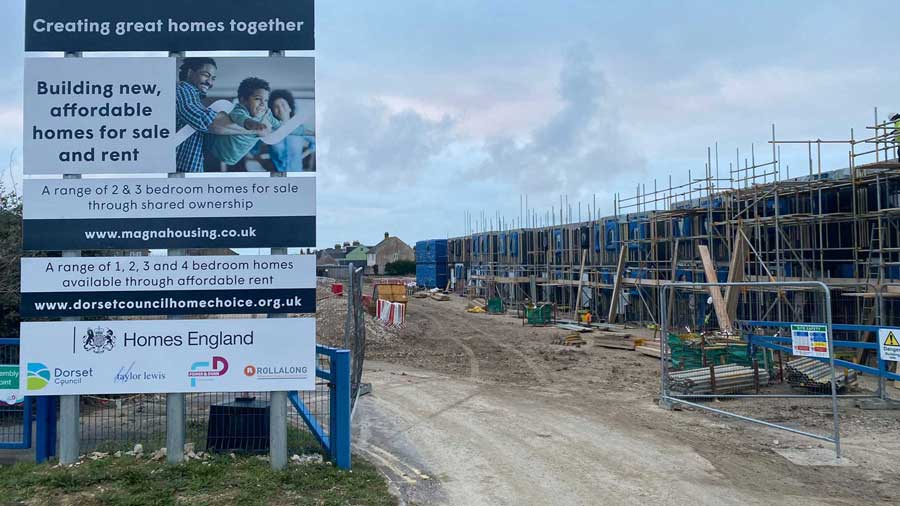Where are my housebuilding heroes?
There is no shortage of housing-related programmes on TV, but are any of them inspiring young people to become the builders, plumbers or electricians we so desperately need?

GROWTH, DEVELOPMENT & REGENERATION
Image: Istock

Terry Fuller
Former Executive Director, Homes England, and Managing Director, Taylor Wimpey, Non-Executive Director,

Terry Fuller
Former Executive Director, Homes England, and Managing Director, Taylor Wimpey; Non-Executive Director
Issue 70 | February 2024
Switch on the TV and it’s full of police dramas (how many more people can be murdered in that one village?), endless soaps, cooking programmes (perfect lobster in cost-of-living crisis), reality series (Warhol was right), or quiz shows (you can win 2% of the presenter’s appearance fee) and then watch it all again with ‘celebrity’ versions.
But the one that really gets me is the endless ‘house’ programmes. From ‘Location, Location, Location’ to ‘Selling Sunset’, ‘Homes Under the Hammer’ to ‘Grand Designs’. All told, there’s about 20 house programmes across all channels – 20 programmes but no heroes. No one who inspires me, who would make me want to enter the housebuilding industry or, better still, take up a trade or a profession linked to delivering a much-needed new home.
“There were plenty of comprehensive secondary school kids willing to follows their fathers onto building sites.”
Not the 1970s any more
I left school with no qualifications and my first day on site was cutting sheets of asbestos by hand, when health and safety was unknown and there were 240 deaths each year on UK building sites. Fred Dibnah and John Noakes were on TV, climbing towers with no safety precautions and were considered ‘real men’.
Hard hats, hi-vis jackets, boots, glasses, gloves, COSHH (Control of Substances Hazardous to Health Regulations), and CDM (Construction Design and Management Regulations) were decades away, and yet there were plenty of comprehensive secondary school kids willing to follows their fathers onto building sites. They’d spend five years as an abused apprentice and come out the other side with a skilled trade, money in their pockets, a chance to be employed for life and pride in the job.
For me, working on site was always the best craic: the camaraderie, stories, coaching, the laughs. How else could we survive the dark, freezing winter months on windswept sites, or the blazing summer sun of 1976 without factor 50 sun cream?
Not enough construction workers
Why should I care? Pre-Covid there were around 2.5 million operatives in the construction industry; but the cohort is grey, and some 400,000 people did not return in 2022. How on earth are we supposed to build the 300,000 new homes needed per year and refurbish the 20,000 existing homes per week to get to net zero-carbon by 2050 if we do not have the on and off-site people resources?
Research by the CITB in 2016 – pre-Covid and Brexit – aimed to establish how many qualified trades people we had building homes, schools, factories, offices and roads. The numbers in orange are women:
- Bricklayers (148,000; 350)
- Electricians (125,000; 284)
- Carpenters (190,000; 71)
- Plumbers (45,000; 13)
- Painters (32,000; 462)
- Roofers (77,000; 0)
- Scaffolders (31,000; 229)
There are no stats on wider diversity. Of the total 1.22 million manual workers, only 75,000 are trainees. Moreover, 500,000 of that workforce are over 55 years of age.
“How on earth are we supposed to build the 300,000 new homes needed per year and refurbish the 20,000 existing homes per week to get to net zero-carbon by 2050 if we do not have the on and off-site people resources?”
Worried? You should be
While the Construction Industry Training Board (CITB) is a key player in training, in order to flourish we need more people. For me it’s the younger, unqualified, raw material we need to attract: the school leavers not seeking to be graduates.
We need some building heroes on TV. Imagine, if you will, a short TV series in which several of each tradesperson are interviewed, how and why they got there; dreams, aspirations, achievements, and a voice off-screen indicating what their broad salaries could be. And of those who went from site skills to management and then to executive level. Why and how. We need to follow the progress of apprentices, they need to be role models, this could be the next generation ‘Seven Up’.
Opportunity knocks
I want to see engaging charismatic leaders in the housebuilding business who have become successful and want to inspire another generation to join this band of merry women and men. I don’t want to hear them bleating about planning or difficulties, the best leaders are the positive ones, the ‘dealers in hope’. They should be able to enthuse, entertain and inform and thus be welcomed via the telly into countless homes. Just like Barry Bucknell in 1957.
Oi Channel 4! Over here my son. Can you hear me?

“We need to follow the progress of apprentices, they need to be role models, this could be the next generation Seven Up.”

